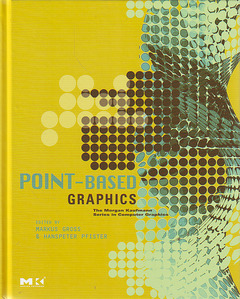Point-Based Graphics The Morgan Kaufmann Series in Computer Graphics Series
Coordonnateurs : Gross Markus, Pfister Hanspeter

The polygon-mesh approach to 3D modeling was a huge advance, but today its limitations are clear. Longer render times for increasingly complex images effectively cap image complexity, or else stretch budgets and schedules to the breaking point.
Comprised of contributions from leaders in the development and application of this technology, Point-Based Graphics examines it from all angles, beginning with the way in which the latest photographic and scanning devices have enabled modeling based on true geometry, rather than appearance.
From there, it?s on to the methods themselves. Even though point-based graphics is in its infancy, practitioners have already established many effective, economical techniques for achieving all the major effects associated with traditional 3D Modeling and rendering. You?ll learn to apply these techniques, and you?ll also learn how to create your own. The final chapter demonstrates how to do this using Pointshop3D, an open-source tool for developing new point-based algorithms.
2. A Historical Perspective (Levoy)
3. Acquisition
4. Foundations and Representations
5. Digital Processing
6. Rendering
7. Physics Based Animation
8. Selected Topics
9. Outlook (Gross, Pfister)
Bibliography
Index
Hanspeter Pfister is associate director and senior research scientist at MERL (Mitsubishi Electric Research Laboratories) in Cambridge, MA. He is the chief architect of VolumePro, Mitsubishi Electric's real-time volume rendering hardware for PCs. His research interests include computer graphics, scientific visualization, and graphics architectures. His work spans a range of topics, including point-based graphics, appearance modeling and acquisition
- The first book on a major development in computer graphics by the pioneers in the field
- Shows how 3D images can be manipulated as easily as 2D images are with Photoshop
Date de parution : 06-2007
Ouvrage de 552 p.
19x23.4 cm
